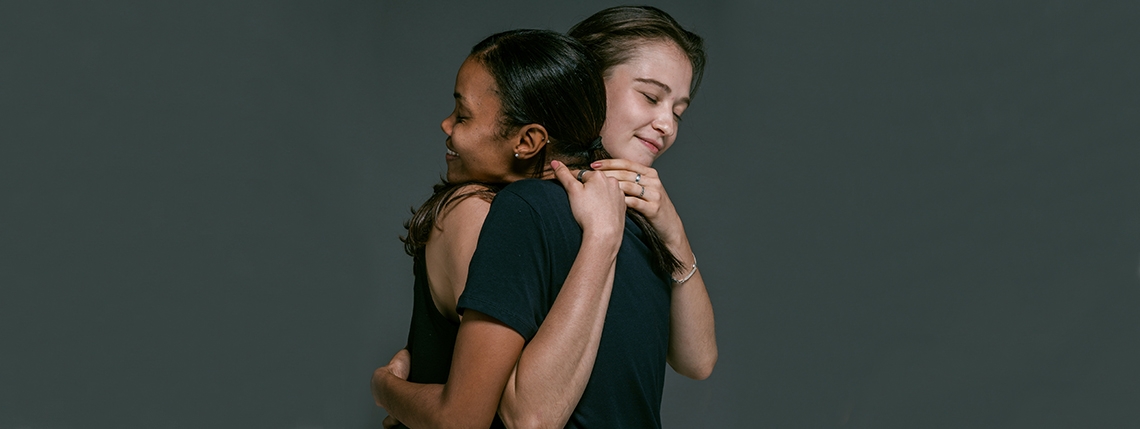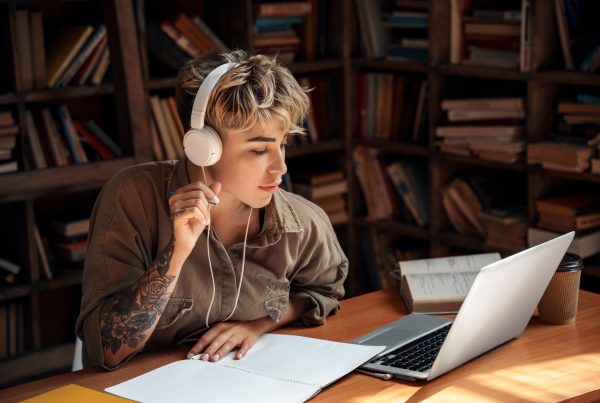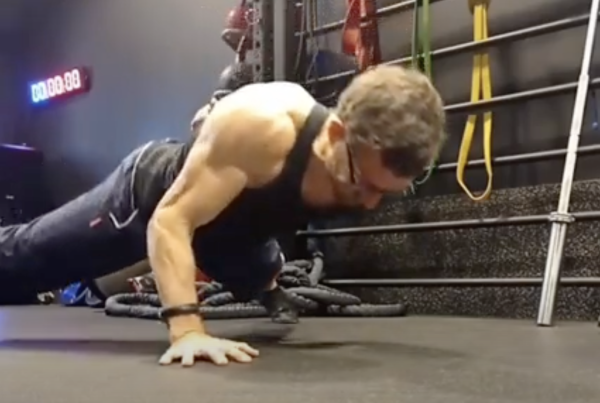This article was originally published by the Australian Fitness Network and is focused on the Australian fitness industry. No one organisation or country is 100% sure what the best way to reopening our industry is in this new landscape. However, this blog does give us some insight into the procedures and the emotions felt in a country further down the road than us.
A month after reopening her clubs post-isolation shutdown, group exercise manager Leisl Klaebe looks at how the experience has been for both staff and members.
As we head into the sixth week back in our Virgin Active clubs post-isolation, it is worth reflecting on how the club reopening has been for everyone involved.
The return has been universally met with joy by members and staff alike, and the hardest thing has been not to hug everybody! When your club has a great culture and your workmates feel like family, social distancing takes some self-control.
The reopening checklist
Preparing to reopen was undeniably very hard work for everyone, with a long list of health and safety protocols to put in place, and numerous new procedures to both execute and train teams to deliver. The list of tasks was long and time was short. We were also faced with the challenge of galvanising ourselves and our staff to work at pace after nearly three months of a quieter, slower routine working remotely.
The reopening checklist included:
- getting decals and signage designed and made for messaging in the clubs
- measuring and creating social-distancing compliant spaces
- putting in place procedures for social distancing in each newly created space within the clubs
- relocating or putting into storage non-essential equipment
- purchasing temperature-checking equipment and creating accompanying logs
- facilitating training in all new procedures and protocols to staff across all departments
- recreating and reloading timetables and, for the first time, implementing gym floor booking spaces.
And this was just the tip of the iceberg. The club reopening checklist was substantial across all departments.
Staff responsibilities
Group exercise coaches were given programme-specific training on how to deliver post-isolation classes without physical contact, with social distancing and extra health and safety protocols.
Customer service and sales staff had role-play training on how to answer challenging member questions regarding coming back into their clubs, as well as training on taking member and staff temperatures on entry.
PTs had to almost start from scratch to re-establish their client base. The operations team suddenly had cleaning duties after every single class in addition to on the hour and three/four hourly. They were also tasked with installing the new decals and signage, hand sanitiser units, wipe dispensers and closed bins.
Suffice to say, the way we ran our clubs day-to-day changed in lots of little ways.
We reopened with the mantra ‘forget about your job description’. Everybody just pitched in and did what needed to be done, and that is still the case. Work life has by no means returned to normal or settled into a ‘new normal’. Constant assessment, discussion and adjustment are the order of the day, and will be for quite some time.
Staff have totally nailed all the new hygiene, cleaning and social-distancing protocols, and group exercise coaches have been stoked to be doing what they love again. Far from being annoyed with all the new procedures, members have expressed gratitude for the amount of cleaning and safe exercise measures we have implemented. No one has seemed anxious, nervous or uncomfortable to be back in club. Arguably, those that might be concerned are still on a membership freeze or may have cancelled. Overridingly, member feedback has been that it is good to be back, to be moving again and to be reunited with their fitness community. Importantly, they also feel safe and like we are taking very good care of them.
Evolving timetables and classes
We opened all our clubs with a strong timetable offering, predicting 70% of members would return. We learnt some quick lessons upon reopening, however: the Central Business District (CBD) remains very quiet, and we soon realised we had scheduled too many classes, while, conversely, we needed to add more classes to our suburban clubs.
Our Sydney CBD clubs opened on 15 June 2020 with class occupancy in the first week of 33-35%, but with group exercise penetration at 90%, illustrating the fact that those in the city who were choosing to return to our clubs were prioritising group workouts over gym floor training. By comparison, our suburban clubs had class occupancy of 50-60% but group exercise penetration of 70-80%. By July all our newer urban clubs had a group exercise penetration of 90%, while our older suburban clubs had 70-80%.
So, fewer people were returning to the city clubs than to the suburban clubs – but those who were returning were more inclined to be group exercisers than gym floor trainers.
“Those in the city who were choosing to return to our clubs were prioritising group workouts over gym floor training”
The reason for CBD club traffic being lower than that in the suburbs is understandable. Many businesses have no date set for workers to return to their office, have set dates as late as November for select staff to return, or implemented a staff rotation policy that sees different staff returning to the workplace on different days of the week. It is also noticeable that more offices are now up for lease in the CBD, as businesses opt to save on rent by running their operations more cost-effectively remotely.
Some companies have brought back some staff rostered on shifts from 7am, 8am, 9am and 10am, rather than having them all start at the same time, as it would take too long to get all staff up to their offices with the current restrictions on how many people can be in a lift together. Other businesses, meanwhile, have done ‘early bird’ parking deals, so many workers are leaving the CBD early, leaving the PM peak classes and gym floor extremely quiet. AM and lunch peaks, however, have been better attended and all peaks are definitely growing as the weeks pass. In early July we have started to see more members swiping in outside the heart of each peak.
We have had to add additional classes to suburban clubs, as all those yet to return to working in their usual city offices and exercising in city clubs are working out in the clubs near to their homes rather than their workplaces. They are keen as beans to get back to classes, but with fewer participants allowed in each class, we’ve had to increase the number of classes on offer in order to accommodate member demand.
The Victorian situation
Our Melbourne clubs opened on 22 June and closed again two and a half weeks later on 9 July due to the resurgence of COVID cases and reintroduction of Stage 3 lockdown for six weeks. We are all feeling for the staff and members in Victoria. Such tough times and very challenging for everyone. That being said, people are Virgin’s first concern, and this needs to happen to keep everyone safe, so we will regroup and re-emerge after this new lockdown and live to fight another day! This Stage 3 lockdown in Victoria will doubtless bring some nervousness to NSW, but we are taking it one day at a time and continuing to do what we do well and deliver irresistible exercise experiences.
A heightened focus on health
More than ever, everyone’s health is a priority. We all need to move more, boost our immunity, support our mental health and stay physically strong. The bonus of doing this, with a side helping of socialisation and community connection, has brought members back to clubs in droves. The safety of our staff and members is our priority, accompanied by respect for how people may be feeling differently about returning to clubs at this time
Mandatory temperature checks for staff have ensured that those of us who would have soldiered on when mildly ill in the past have had to prioritise our own health and stay at home to rest (which arguably we should have always done).
There is no ‘new normal’
The art of disruption is to offer members what they need before they know they need it. To this end, constant inter-team communication has been the key to predicting member behaviour and getting on the front foot with changes. Sales, customer services, operations, group exercise, PT and senior managers have all been conversing regularly to ensure we are doing what our members need.
There is no new normal. We have had to be nimble in our responses to the market. We are analysing statistics on member behaviour daily in order to anticipate needs and be responsive. Adjustments are constant, with class additions, subtractions or changes, and amendments to class booking rules and restrictions (to keep things fair for members), as well as to cleaning procedures to ensure staff can cope with the increased workload while still delivering exceptional standards of care for our members.
Unexpected challenges
While many challenges were expected upon return, others were not anticipated.
Booking
Member booking behaviour has been completely different, with many booking at the last minute or booking and then not showing for class. Analysing and overcoming this challenge is currently where our heads are at.
Music volume
Interestingly, some members have found a return to the usual studio music volume a bit of a shock after the quietness of isolation and we have chosen to reduce music volume in select classes to allow members to adjust.
Personal space
A class that previously accommodated 24 people was reopened with 16 people and then, based on member feedback, further reduced to 14 people per class to ensure everyone had the room to exercise and feel safe while they did it.
Staff work/life balance
Some clubs have seen a drop-off of some staff over the three months of isolation, for a range of reasons, and it has also been common for many to have used that time to reassess their work/life balance and choose a modified way of working on their return. This has required adjustments to be made to club staffing levels and to timetables. Knowing that people’s work/life balance is front of mind, and will likely continue to be, has meant that we need to work a little differently and accommodate this important change.
Cycle dilemmas
Cycle floor coaching is tough to execute, due to having to keep 1.5m between participants. This does affect how classes are delivered for some programme styles, and we are currently re-assessing how we do this during this time.
Hands-on technique assistance
Yoga and Reformer Pilates hands-on adjustments, or member assistance, are a thing of the past, and this brings challenges for our mind/body coaches.
More programme-specific training is about to be delivered to our teams by our head coaches. Despite the mammoth task to re-open our clubs, everyone has had a smile on their dial and couldn’t be happier to be back. It is true that when you love what you do, it doesn’t feel like work, even in times of adversity.







